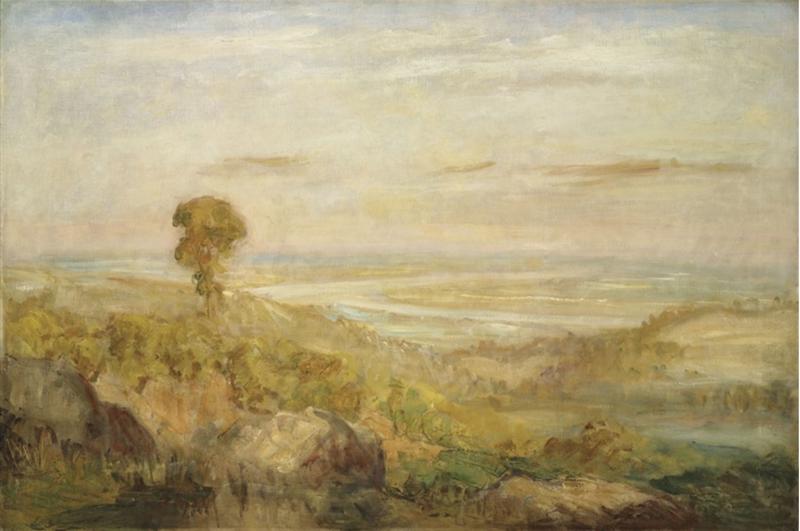The Horse-Shoe Bend of the Severn, at Littledean

Steer spent the summer of 1909 painting at the house of his friend, J.L. Harrison, whose home overlooked the famous horse-shoe bend of the River Severn at Littledean in Gloucestershire. Steer executed six large canvases of this subject, each painted under different light and weather conditions. Three paintings from the series are now in public collections: Municipal Art Gallery, Dublin; Aberdeen Art Gallery; and Manchester City Art Gallery.
Bruce Laughton (loc. cit.) comments of the present work, the last in the series, that it is a direct challenge to Turner: ‘The Severn valley assumes an immense and indeterminate scale under the swathes of pink and white mist which rise from it. The solitary tree rising against the sky, acts as a vertical lever which balances the horizontal strata of the composition. This tree is painted in Indian-red, gamboge, and a very hot earth-green, all scraped into each other with short strokes of the palette knife. Below it, in the foreground, is a pool surrounded by boulders of white and purple, with glazed shadows of alizarin-crimson. Looked at in isolation, the forms and colours of these boulders are surprisingly reminiscent of Cézanne’s paintings of rocks. Such a conjunction of Turner with Cézanne, if it was present in Steer’s mind, would certainly be expressive of his dilemma. Rising mists and prismatic colours were not enough; here I suggest, in trying to impart a structure to his picture surface (with a degree of desperation) Steer has found himself decorating it in a modern way. It still evokes the ghost of Turner, but then both Turner and Cézanne have interested modern artists.’



